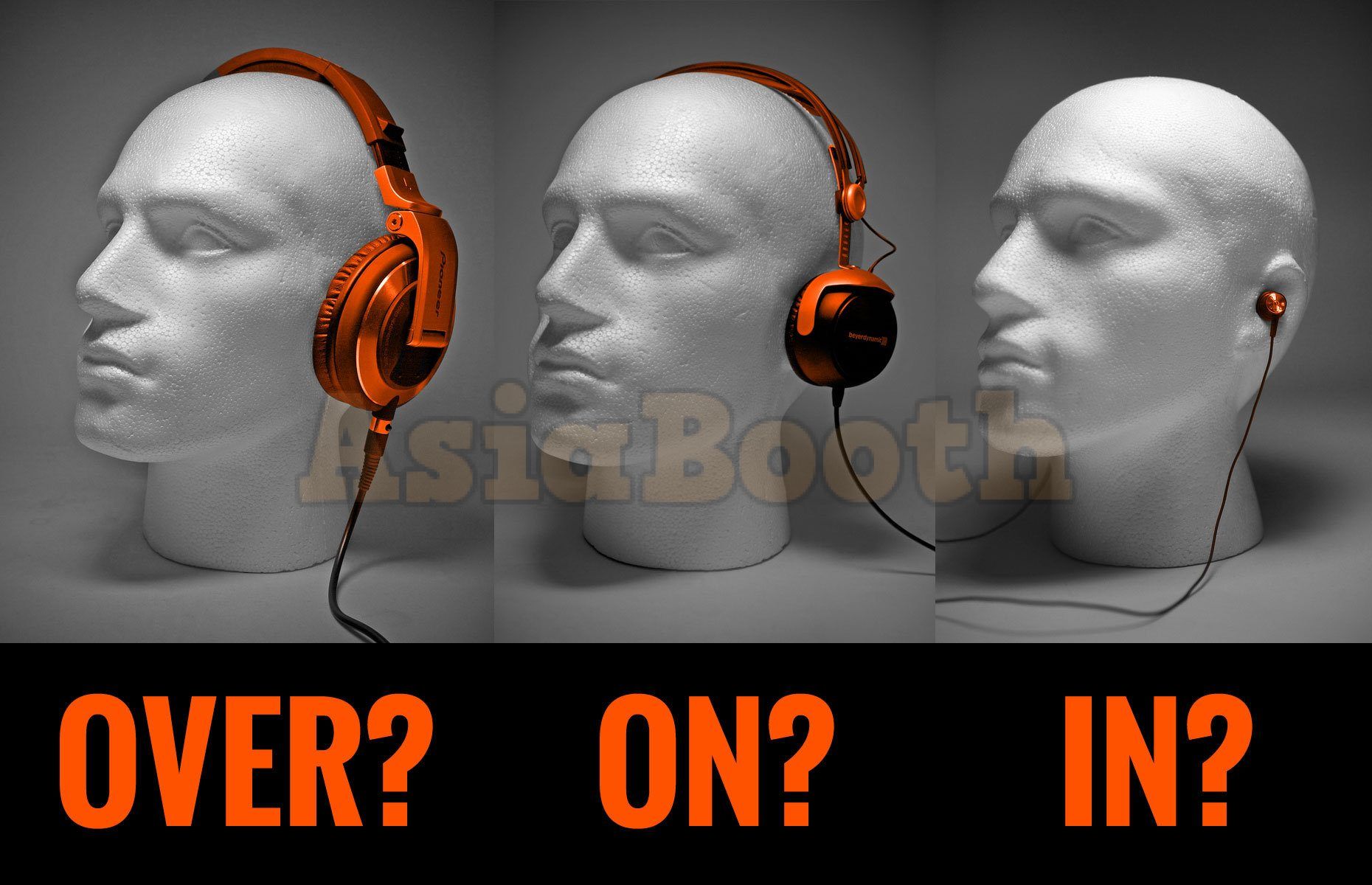Which Is Better: In-ear vs Over-ear or On-ear Headphones
Over-ear Headphones
The last type of headphone in the in-ear vs over-ear is, of course, the over-ear headphones (sometimes lovingly called “Circumaural” headphones by guys in lab coats wearing propeller hats). Over-ear headphones are popular because they can provide a comfortable fit, with advanced features like noise cancellation and hi-fidelity sound. Not all manufacturers who make over-ear headphones product premium models, but there’s not much reason to make an over-ear product if you’re not serious about your headphones. With over-ear headphones, there’s a lot to like and a lot to watch out for.
Portability
These are not highly-portable headphones. That’s not to say that you can’t take them on a plane (I actually have a pair I take with me when I fly), but they won’t be as compact as a pair of over-ear phones or in-ears. Over-ear headphones are what sound engineers use and what you’ll find in many sound design rooms in Hollywood. They do a great job at providing natural isolation and you hear exactly what you need to, and very little else.
Noise Rejection
You get a lot of natural noise rejection with closed-back over-ear headphones, but this does vary from model to model. I have had some that allow quite a bit of noise in from the outside, and there are even models that are designed to be more open, allowing in more of the environment. The idea is that natural sound projects into your room and removing the tone and environment can create a less realistic experience. As they say, opinions are like…noses. Everybody has one. Over-ear headphones are also the most popular platform for active noise cancellation (NC). These products reject outside noise by sampling the environment with a pair of external microphones, and then playing back that noise out of phase. The inverted waveform effectively removes the noise, leaving you with your music—and a much greater dynamic range. These active systems are not without their challenges, however. I have yet to hear a pair of active noise canceling headphones that sound better than reference headphones without that technology. Of course, that’s in a quiet room. In a noisy environment (like an airplane), the NC headphones will win every time.
Comfort
Over-ear headphones can be either extremely comfortable or extremely uncomfortable. You need to look for a thick, padded headband that will distribute the weight well across the top of your head. You also want ear cups that won’t sweat easily, so you can wear the phones longer. I have actually seen some synthetic materials that last longer and are more comfortable than real leather. Look for pliability and a design that doesn’t have all the weight focused at a single point on the top of your head. It’s unfortunate that the new wave in headphones is to encase the entire system in plastic. With these new designs I’m finding that the comfortability and flexibility is greatly hampered compared to the headphones of just a few years ago.
Sound
Some of the best sound you can get is possible through either closed- or open-back headphones. These are where the flagship or reference products are and where you will find all of the R&D that then trickles down to other products. If you want the most consistent, very best possible sound in a headphone, you are likely to end up with some sort of over-ear model.
Tags: Earphones, Headphones, How to choose headphones


